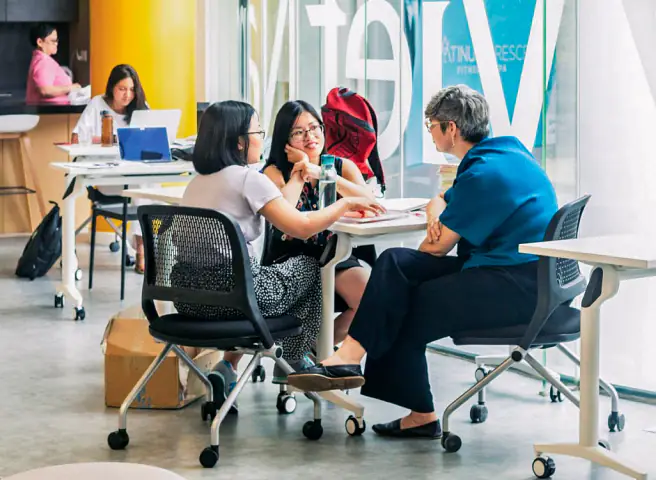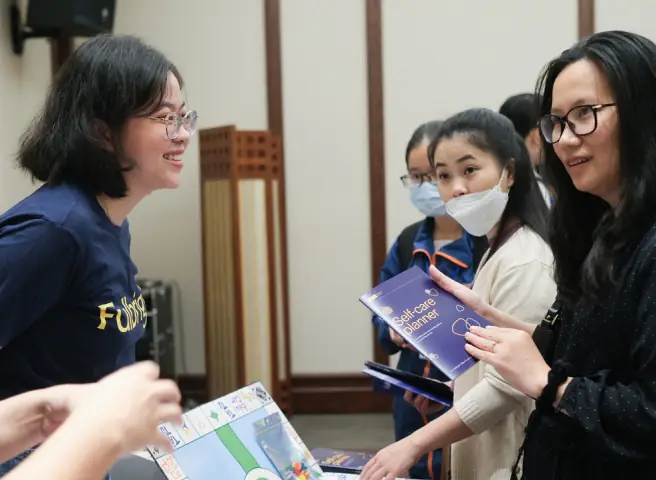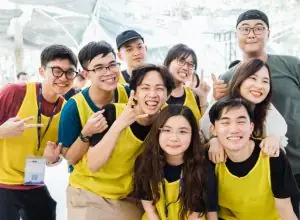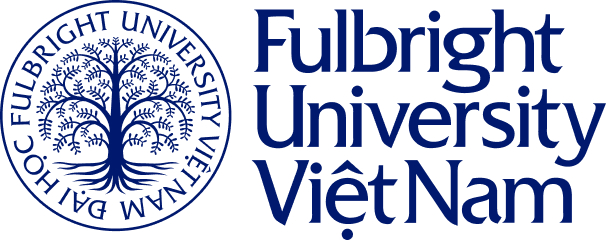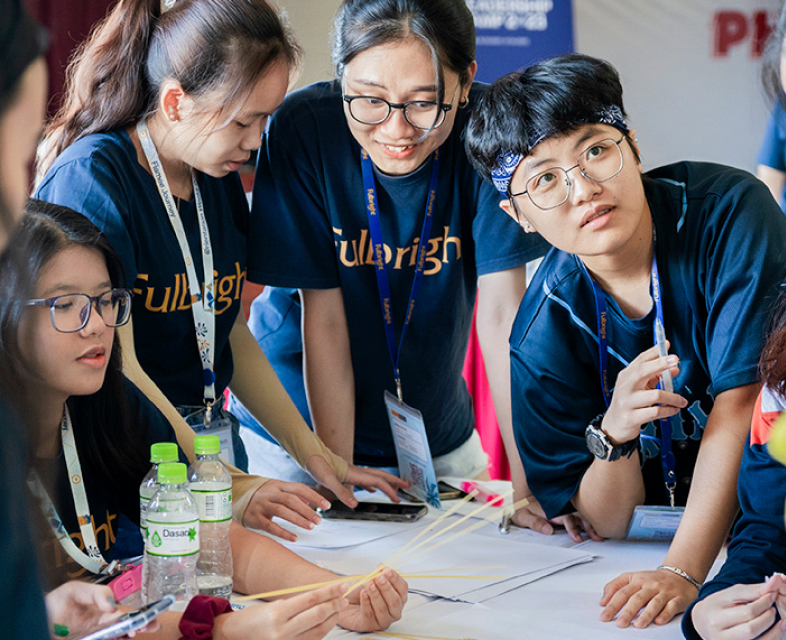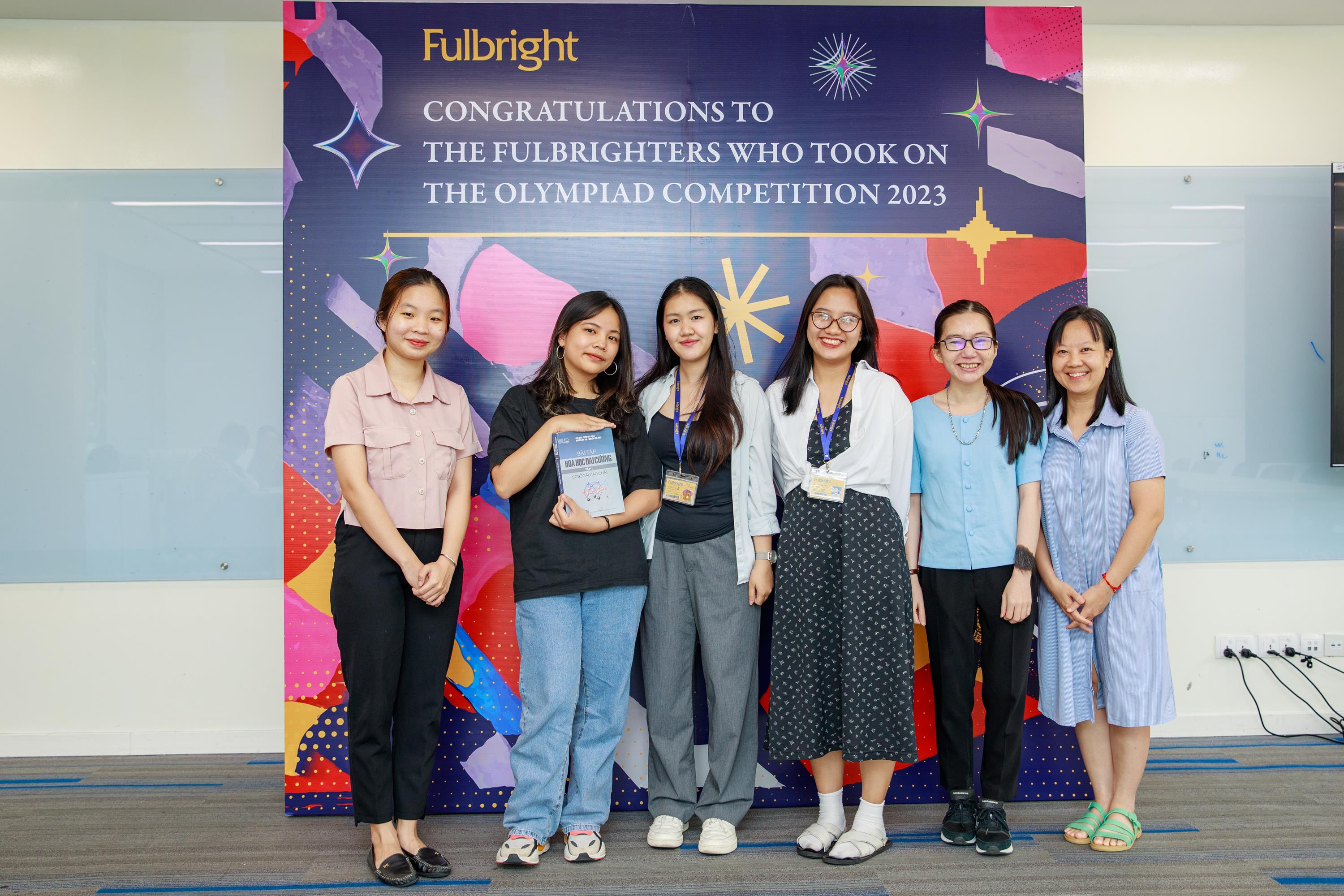
Meg Burns and Nanette Veilleux on their cherished time as visiting scholars at Fulbright University Vietnam, the bond they made with local students, and how the experience contributed to the expansion and enrichment of their studies.
A flower bed for the cultivation and nurture of liberal arts ideals in Vietnam’s higher education, Fulbright University Vietnam has, since its establishment in 2016, built towards a curriculum centered on the virtues of intellectual rigor, interdisciplinary crossovers, the passion for lifelong learning, and the desire to do good through merits of critical thinking and creative problem-solving. Where faculty and students work hand in hand to reimagine a better world, the university has become not only host to a new generation of conscientious young Vietnamese people, but also a characterful and trusted destination in Southeast Asia for scholars far and wide to come teach and lecture, as well as conduct research on a wide variety of interests.
For the academic year of 2021-22, Fulbright welcomed, among other distinguished academics, the visiting scholars Meg Burns and Nanette Veilleux. Ever prompted by curiosity about and dedication to their respective fields of contemporary art and computer science, their time in Vietnam has been nothing short of rewarding – both for how impressed, and inspired, they were of Fulbright students academically and creatively; but also how Vietnam, as a land of fascinating intrigues, had offered them unique opportunities in the never-ending pursuit of knowledge creation.
Meg Burns: “At Fulbright, I feel intellectually challenged and engaged in classes as much as the students”
An art history major from the University of Notre Dame, Indiana, Margaret “Meg” Burns arrived at Fulbright as a recipient of the 2021-22 Luce Scholarship – a highly competitive fellowship program that promotes “the understanding of Asia among potential leaders of American society.” “I felt that my experiences had been quite Western-focused, that it was a limited lens onto which I studied art history,” she said. “The reason I applied for the Luce Scholarship in my senior year of college, as an aspiring art historian and curator, was to have the opportunity to explore and learn about the art world in full.”

The fact that her thesis advisor at Notre Dame was a colleague of Dr. Pamela Corey, Fulbright faculty in Arts and Media Studies and recently, author of the book “The City in Time: Contemporary Art and Urban Form in Vietnam and Cambodia”, played a persuasive role in Burns’ decision in choosing Vietnam, and Fulbright University, as her scholarship placement. While Dr. Corey is known for her research into Southeast Asian contemporary art between the late 2000s and mid-2010s, it was also the presence of Dr. Nora Taylor, another well-respected American art historian with a focus on Vietnamese art in the 1990s, as Fulbright’s Interim Provost, that further convinced Burns of the possibilities awaiting her in Vietnam.
“One of the great things about working with Dr. Corey at Fulbright, and in addition with Dr. Nora Taylor, is that they always encouraged me to get a sense of what it’s like on the ground,” said Burns. “I realized the scene here can be super fast paced, by nature ephemeral and constantly changing; so each moment here is very unique. I felt very lucky, at times blown away, to have been to wonderful exhibitions, to really get to know the artists and the people currently working in the local art scene.”
At the University of Notre Dame, Burns’ honor thesis was about the American artist Theaster Gates, celebrated for his Rebuild Foundation that acquires and converts derelict buildings in South Side Chicago into neighborhood-friendly hubs for historical archives, cultural activities, and community events. She had also spent a semester abroad in Dublin conducting research on Mark Dion, a conceptual artist from Massachusetts who collects artifacts, ephemera and remnants for installations that deconstructs our perception of and relationship with nature throughout history.

Burns’ interest in socially engaged practices of art, and how science and art can inform each other to transformative results, stemmed from the fact that she was a chemistry major before switching lanes to art history in her sophomore year. “I think that art in general, and art history in particular, is so wonderful because of how many stories, narratives and layers can be embedded within a work of art,” she said. “You can see it as not only being a canvas with paint on it, but also an intersection of politics, culture, and economics. It can express a thousand things of a particular time and place in the life of an artist we love.”
During her six-month stay at Fulbright, Burns was research assistant to Dr. Pamela Corey as well as teaching assistant in two of her courses, “Visualizing Vietnam” and “Special Topics in Contemporary Art”, in which seemingly simple questions on what defines Asia, or who decides the center and periphery of the art world, were regularly discussed, and debated, to re-examine dominant ways of looking at art. “I feel intellectually challenged and engaged in classes as much as the students, to totally rethink and recontextualize all that I’d learned before,” she said.
“Obviously, the students at Fulbright have received an education that’s very unique in its focus. From reading their essays to talking through big ideas to giving them advice on potential career paths, I love how bright, sharp, inquisitive and hard-working the students are. I have seen Fulbright students who are studying full-time yet also running non-profits, making fantastic art, curating exhibitions, or writing poetry. To be honest, I have not found something that Fulbright students cannot do, except maybe sleep,” she smiled.
Nanette Veilleux: “It’s all about the collaborative spirit between faculty and students”
Nanette Veilleux is a Fulbright scholar from Simmons University, Boston, where she serves as Professor in the Department of Mathematics, Statistics and Computer Science. For the past 30 years, her research interest has been in automatic speech recognition (ASR). “I’ve been looking at how a computer could understand human prosody, which has to do with intentions behind the actual words,” she said. “It is not so much what you say, but how you say it; it’s about how people make words louder, longer, higher or lower in pitch, etc., to imply certain emotions and make our thoughts known to each other.”

At Fulbright University Vietnam, Professor Veilleux was adjunct faculty in Computer Sciences, while also facilitating collaborative research between her students at Simmons and Fulbright undergraduates on how to do ASR in Amharic, an Ethiopian language, and Vietnamese respectively. Students in both groups met every week on Zoom to discuss samples they had collected. The data was then analyzed and input to ASR systems to map the speech onto particular meanings and refine AI’s accuracy in transcription and predictions of these non-European languages.
“There are millions of fine shades of meaning in speech, with subtleties that have to do with context and complicated associations that can take years to build up a database,” she said. “Even though ASR has been pretty good in European languages since the late 90s, not as much resources have been put into non-European ones. The best speech to collect at first is just people saying numbers, and I’ve learnt that the dialects between Northern, Southern and Central Vietnamese are very different. That was something really interesting for me.”
Professor Veilleux’s other research area is in computer science pedagogy, specifically active learning strategies such as Process Oriented Guided Inquiry Learning (POGIL), a teaching method that’s also been adopted by many of Fulbright faculty. “Honestly, when it comes to computer science, anything I teach now will be out of date in five years. So it’s really important to teach students to learn ‘how to learn’,” she said. “With POGIL, essentially you throw the students in at the deep end by giving them questions, and a little bit of scaffolding to help them be able to swim to shore, to work themselves out of the problem.”

While frustration can lead to anxieties that might work against students’ confidence and motivation, according to Professor Veilleux, the exercise of POGIL can teach them that such feelings are not a bad thing. “It’s a great benefit for students to learn how to be comfortable and deal with the state of not knowing. It’s a thing that you have to go through in order to understand something, to gradually and patiently acquire knowledge of one’s own. At Fulbright, I think students are very well-situated for that.”
During her time at the university, Professor Veilleux also organized a special event that invited STEM scientists to have a talk with students on what it means to be a woman in science, as well as bringing in experts from US organizations in Vietnam to advise students on opportunities for grad schools in America. Even though she has taught and lectured at Boston University, or conducted research at MIT, at Fulbright, Professor Veilleux has recognized, and appreciated, certain commonalities in terms of how students and faculty always work together to advance one another’s study.
“At Simmons College, for example, there’s not a huge gulf in terms of the relationship between faculty and students. I’ve got to know the students really well. It’s almost like we’re peers, on a basis of equals in trying to work on the same task,” she said. “I felt the same way with Fulbright students, that they were very open, smart, hard-working, and very good at critical thinking and problem-solving. I think that’s all to do with the pedagogical model here at Fulbright. Instead of ‘lecture and listen’, we’re actually doing things. It’s a much more effective way to educate and inspire the young generation of their abilities at solving issues of great importance in life, as well as nurturing and pursuing their individual paths and passions.”
Bao Quyen
